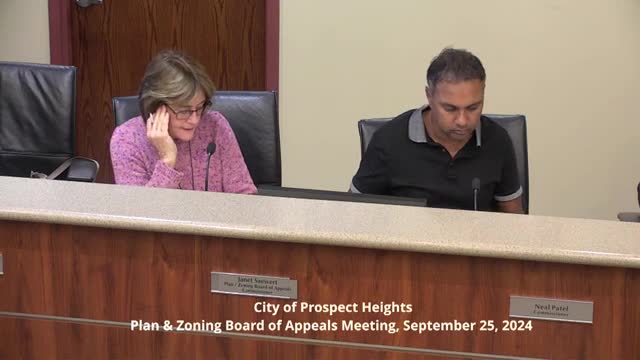New regulations reshape backyard chicken keeping rules
September 30, 2024 | Prospect Heights, Cook County, Illinois
This article was created by AI summarizing key points discussed. AI makes mistakes, so for full details and context, please refer to the video of the full meeting. Please report any errors so we can fix them. Report an error »

In a recent government meeting, officials discussed new regulations concerning chicken coops and accessory structures on residential properties. The proposed changes include five key recommendations aimed at streamlining the management of backyard poultry while ensuring compliance with local codes.
Firstly, the requirement for annual inspections of chicken coops has been eliminated, although an annual licensing requirement will remain in place. This change is expected to reduce the burden on homeowners while maintaining oversight.
Secondly, the maximum size for chicken coops and their covered runs has been set at 280 square feet. However, homeowners can still have up to three accessory structures on their lots, with a total maximum area of 1,000 square feet for all accessory structures combined. Notably, larger lots may allow for additional structures, as homeowners can gain extra square footage for each 10,000 square feet of property.
The third recommendation involves removing the requirement for registration with the state Department of Agriculture, which is anticipated to simplify the process for residents.
Additionally, a new setback requirement mandates that chicken coops must be located at least 20 feet from the rear wall of neighboring homes, ensuring adequate space and reducing potential disturbances.
Lastly, the meeting addressed the maintenance of coops, with a draft regulation outlining cleaning and upkeep standards to be adopted.
The council also discussed the possibility of granting exceptions for long-standing residents with unique circumstances, such as those who have maintained poultry for generations. This consideration aims to accommodate individuals who may have invested significantly in their properties and livestock.
The proposed amendments will be forwarded to the city council for approval, with the understanding that further adjustments can be made in the future as needed. The meeting concluded with a unanimous vote to accept the recommendations into the public record, marking a significant step in local agricultural policy.
Firstly, the requirement for annual inspections of chicken coops has been eliminated, although an annual licensing requirement will remain in place. This change is expected to reduce the burden on homeowners while maintaining oversight.
Secondly, the maximum size for chicken coops and their covered runs has been set at 280 square feet. However, homeowners can still have up to three accessory structures on their lots, with a total maximum area of 1,000 square feet for all accessory structures combined. Notably, larger lots may allow for additional structures, as homeowners can gain extra square footage for each 10,000 square feet of property.
The third recommendation involves removing the requirement for registration with the state Department of Agriculture, which is anticipated to simplify the process for residents.
Additionally, a new setback requirement mandates that chicken coops must be located at least 20 feet from the rear wall of neighboring homes, ensuring adequate space and reducing potential disturbances.
Lastly, the meeting addressed the maintenance of coops, with a draft regulation outlining cleaning and upkeep standards to be adopted.
The council also discussed the possibility of granting exceptions for long-standing residents with unique circumstances, such as those who have maintained poultry for generations. This consideration aims to accommodate individuals who may have invested significantly in their properties and livestock.
The proposed amendments will be forwarded to the city council for approval, with the understanding that further adjustments can be made in the future as needed. The meeting concluded with a unanimous vote to accept the recommendations into the public record, marking a significant step in local agricultural policy.
View full meeting
This article is based on a recent meeting—watch the full video and explore the complete transcript for deeper insights into the discussion.
View full meeting
